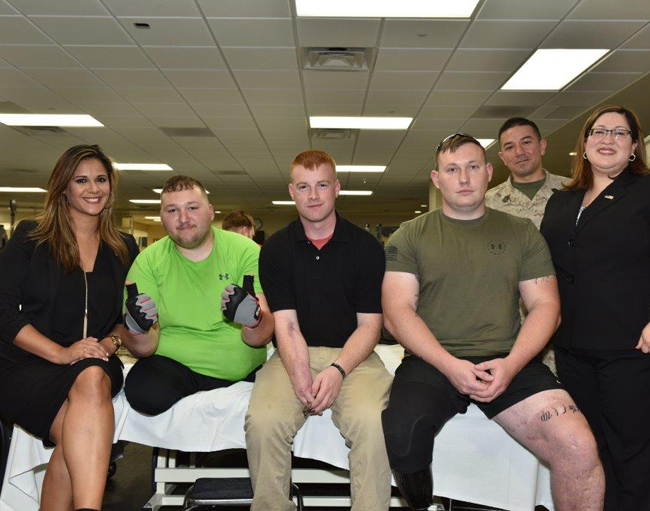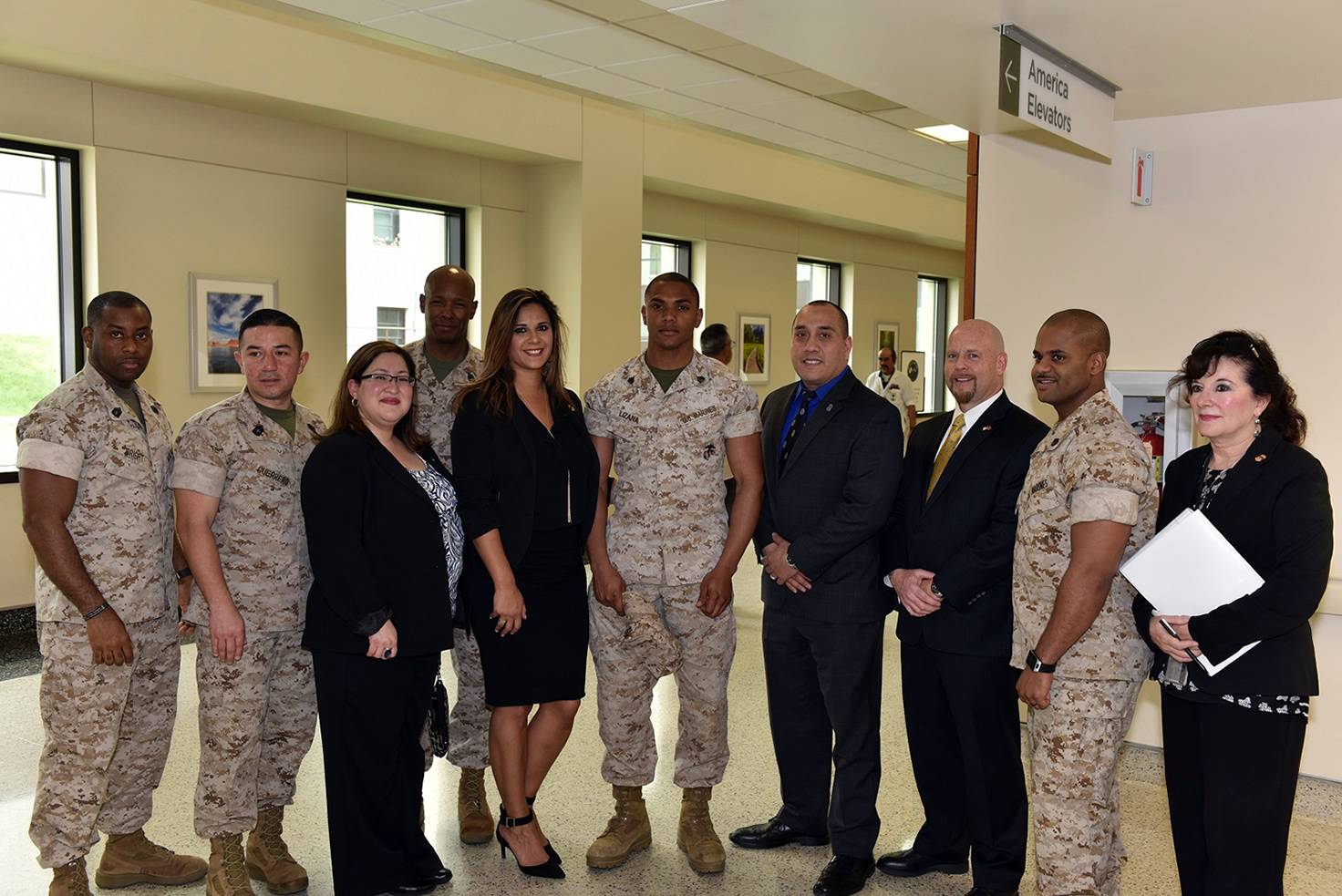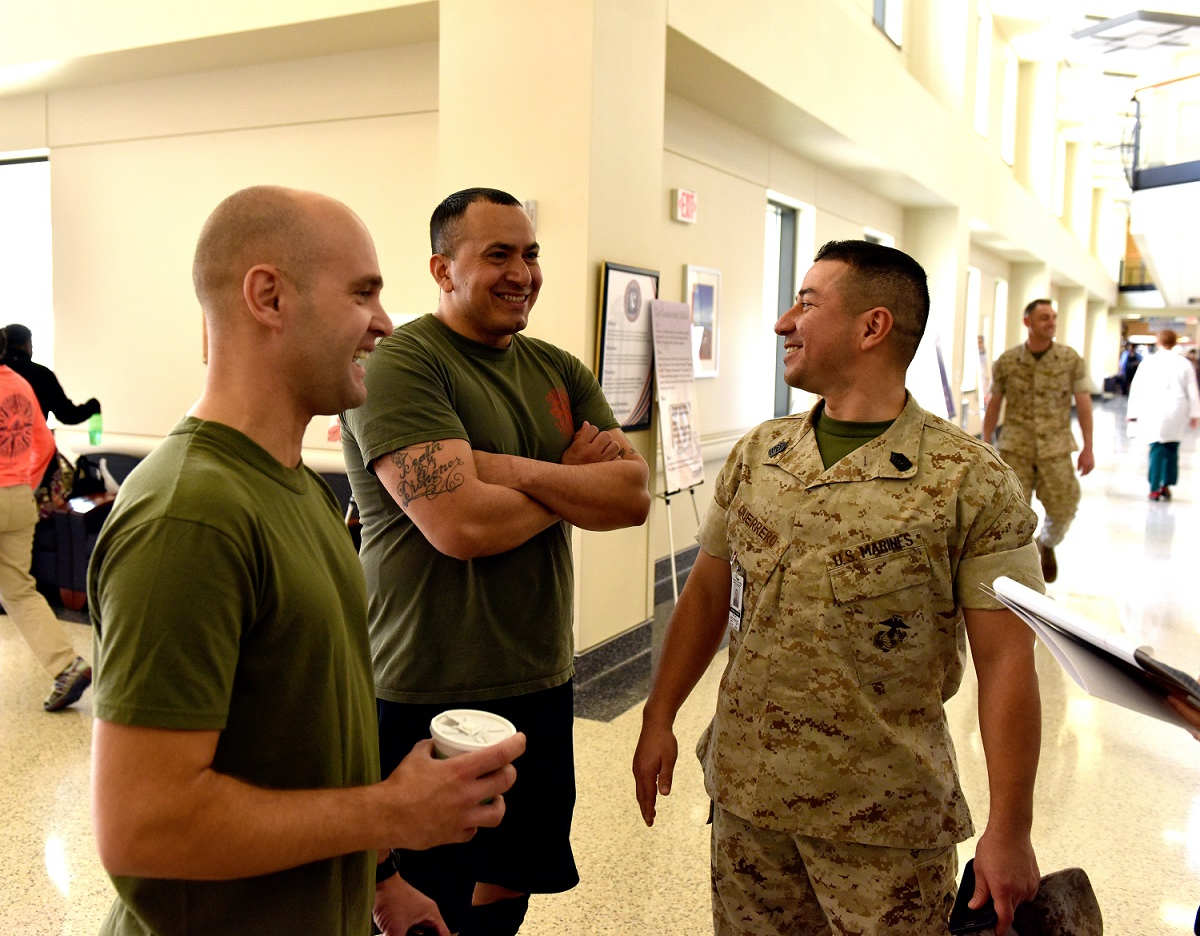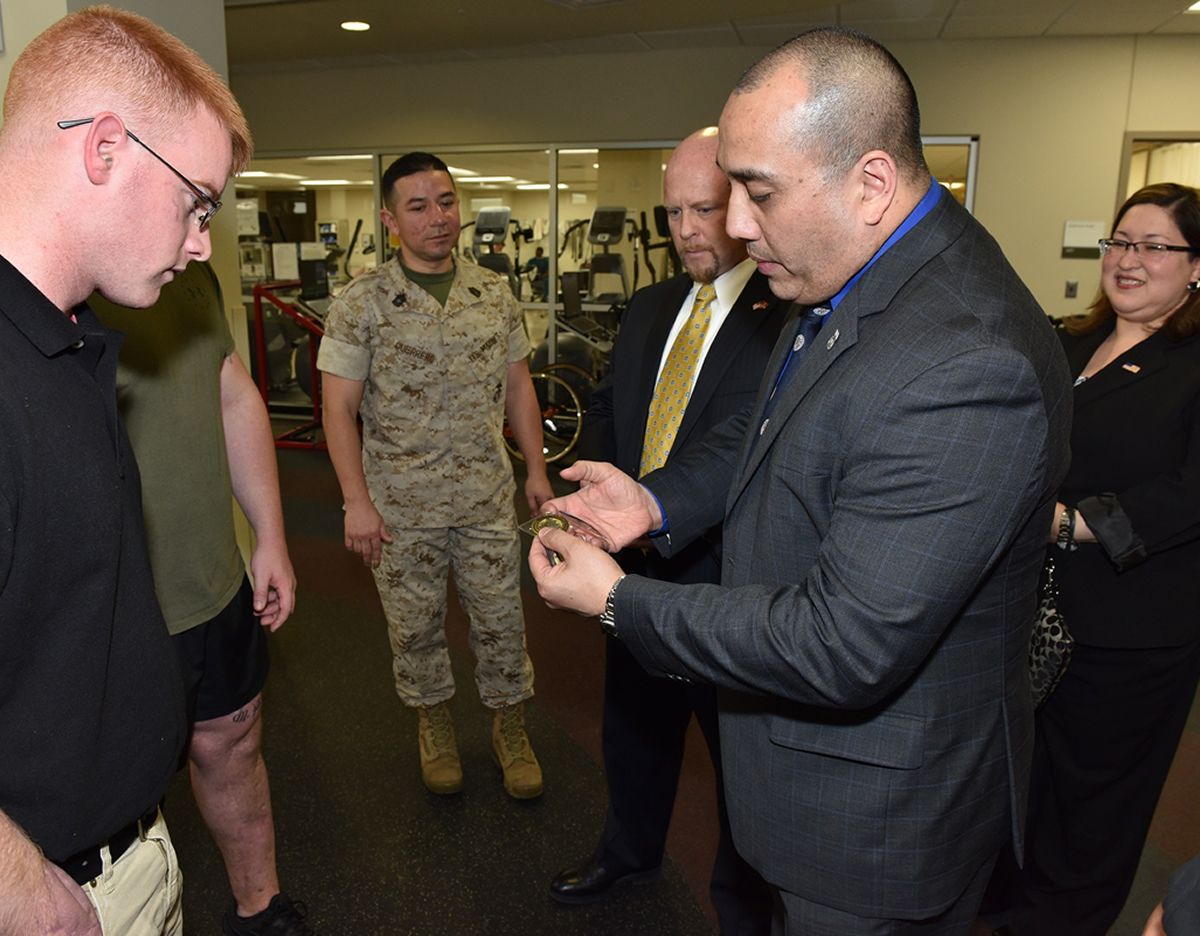ICE visits America's heroes at Walter Reed National Military Medical Center
A group of U.S. Immigration and Customs Enforcement (ICE) employees had the distinct honor of meeting with and thanking heroes from the United States Marine Corps Wounded Warrior Regiment (WWR) at the Walter Reed National Military Medical Center in Bethesda, Maryland, April 16.
“The WWR is here to help these Marines improvise, adapt and overcome,” said Master Sgt. Thomas Guerrero who serves as WWR’s operations chief, and who coordinated the visit with Yesenia Ochoa, the Acting National Juvenile Coordinator for ICE’s Enforcement and Removal Operations (ERO).
WWR helps wounded, ill and injured U.S. Marines, and sailors serving in support of Marine units. Whether Marines are wounded in combat, fall ill, or are injured in the line of duty, the WWR serves the total force: active duty, reserve, retired and veteran Marines.
When ICE representatives first arrived, they were greeted by Staff Sgt. Jose Meija. A quintessential Marine, Meija stood tall and muscular, tattooed on both massive biceps and exuding an air of confidence, positivity and warmth. Meija enlisted in the U.S. Marine Corps in 1999, and he served in Iraq and Afghanistan. Meija came out of combat with nary a scratch. But once in the states, he was diagnosed with a rare immune system disorder that is affecting the nerves in his legs. Smiling broadly, Meija said he is optimistic about the treatment he receives as an outpatient at the Center.
“It’s incredible the miracles that happen here,” said Sandy Dean, a public affairs officer at the Center. “Their spirits cannot be crushed. They just want to get back to their platoon.”
About 10 percent do go back on active duty, according to Steve Springer, a retired Army veteran who is a health care provider at the Center.
Once recovered, including some service members who’ve been fitted with prosthetic limbs, many will go back to the battlefield where they want to serve. As one of the Marines rolled down the hallway on his way to a meeting, Gunnery Sgt. Calvin Bright a staff non-commissioned officer in charge at the Center remarked, “He’s a model Marine.” Bright explained that even though one of the Marine’s legs was gone from below the knee as a result of an IED explosion in Afghanistan, his doctor said there’s nothing to stop him from going back and serving with his unit.
From what ICE representatives saw, especially at the Military Advanced Training Center (MATC) where America’s heroes pushed their bodies in performing strenuous workouts to reach peak performance, the drive to reach their goals and succeed was palpable.
“We take the speed bumps out of the recovery process,” said Springer, about the MATC’s methods.
ICE has a history of hiring U.S. veterans. Of the ICE workforce, 32 percent are U.S. veterans, many of whom have been injured and are seeking the best way forward in which they can continue serving humanity.
“ICE needs people who are innate givers... those willing to fight for a worthy cause. Who better to recruit than our nation’s warriors who have experiential knowledge of courage, discipline and dedication to selfless service?” said Joe Arata, who serves as chief, strategic recruitment at ICE.
ICE’s HSI is conducting its third Human Exploitation Rescue Operative (HERO) Child Rescue Corps class, a program in which wounded, injured or ill veterans are trained in specialized computer forensics and other law enforcement techniques to target and investigate child sexual predators. So far, ICE has hired 14 HERO graduates and 35 veterans in the program are in various stages of HERO training and internship.
ICE representatives distributed challenge coins to the veterans and thanked America’s finest once more for all they have done and continue to do for our country.






